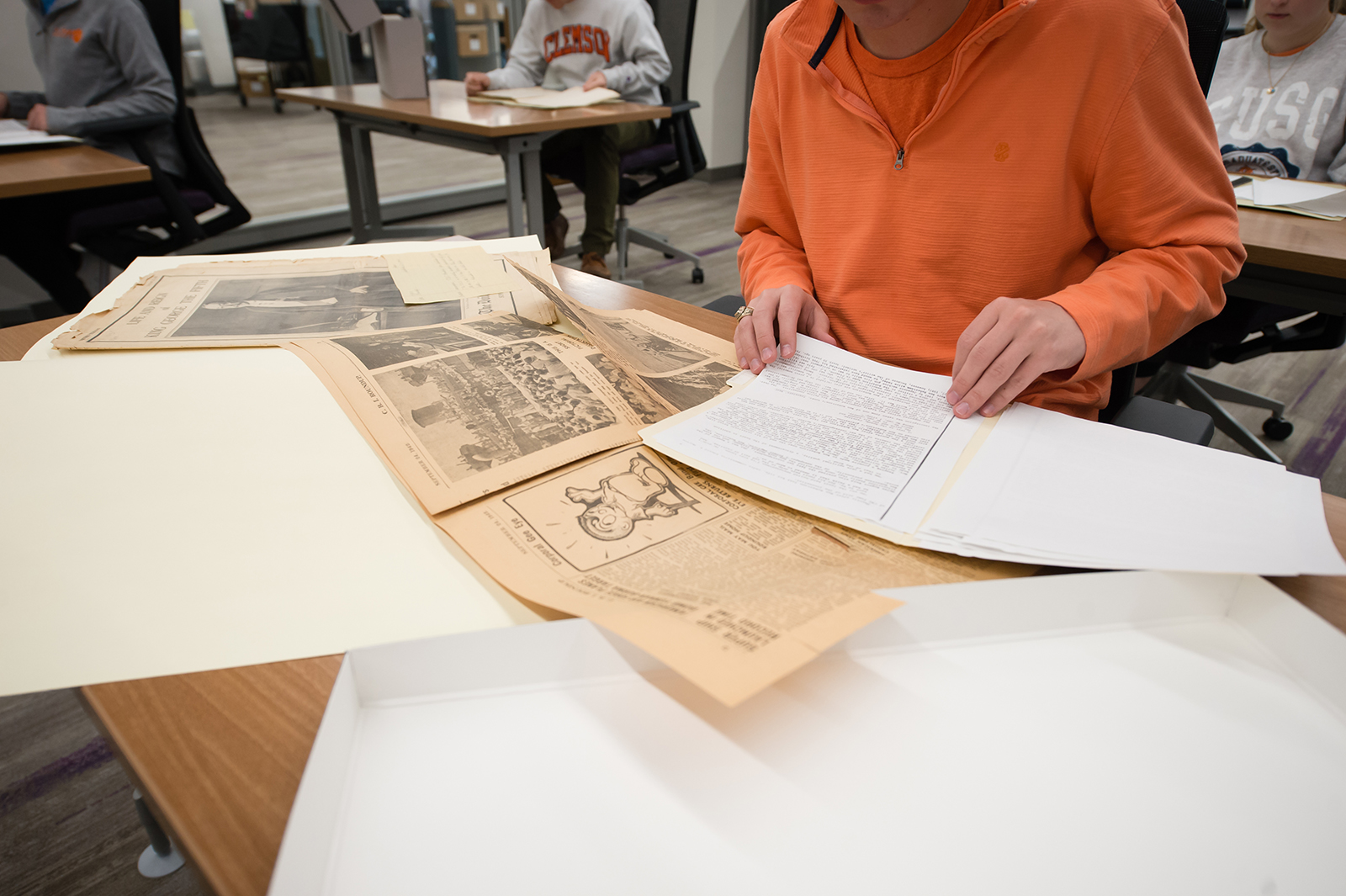Research at Special Collections and Archives
Special Collections and Archives (SCA) is here to help you whether your interaction with us is in person or online. We preserve and make accessible the University Archives, manuscripts, and rare book collections, which include materials of long term and considerable historic significance. We are open Monday through Thursday, 9:00 am to 12:00 pm and 1:00 pm to 4:00 pm, and by appointment on Friday. Our Reading Room is in the Strom Thurmond Institute Building (STI 109) on the University’s main campus.

As some of our collections are stored off-site, we strongly recommend that researchers make an appointment to visit us. This allows Special Collections and Archives staff to have the materials you wish to consult ready when you arrive. Discussing your project with SCA staff is beneficial as we are familiar with our collections and may be able to help you refine your research topic or offer suggestions for search strategies. We are also happy to work with you remotely. Please note, however, that we are unable to conduct extensive research on your behalf. To begin the appointment process please fill out our contact form. If conducting archival research is new to you, we recommend you visit the Special Collections and Archives 101 Research Guide. Here, you will learn more about what to expect when you visit the archives, how to cite archival material, and more!

